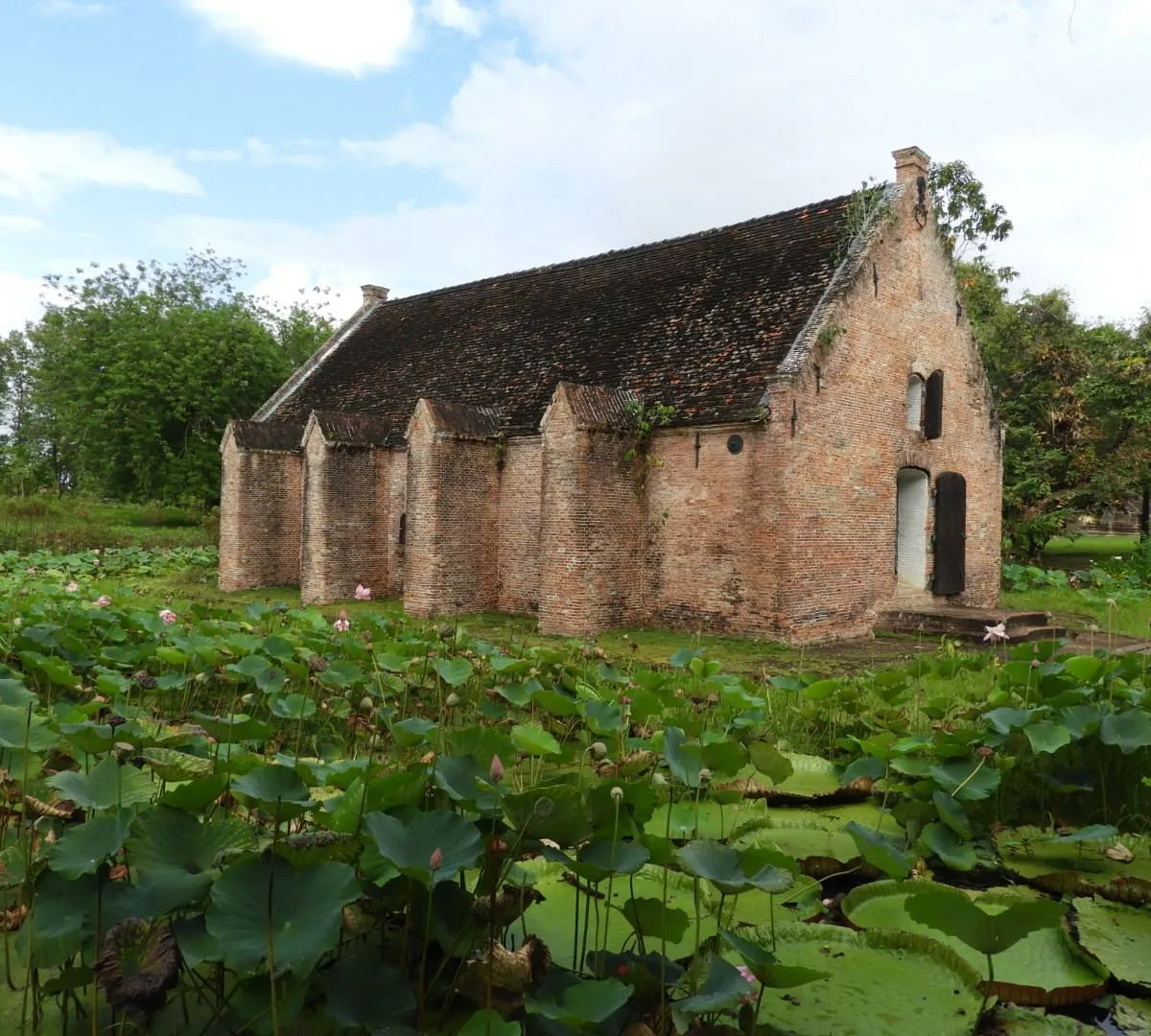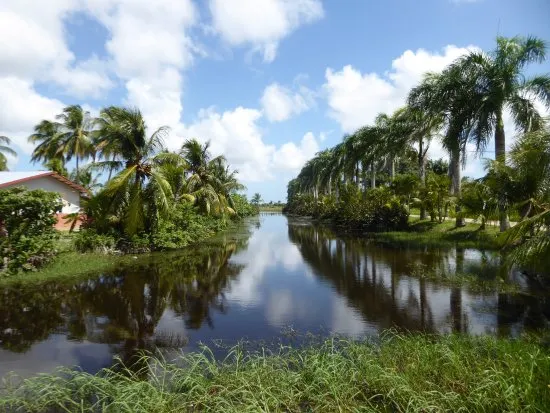1. Overview & Address of the Place
The Koto Museum (Het Koto Museum) is a cultural institution located in Paramaribo, Suriname, dedicated to preserving and showcasing the traditional attire and heritage of Afro-Surinamese women. The museum offers insights into the rich history and significance of the Koto dress and the Angisa headscarves, which are emblematic of Surinamese Creole culture.
Location – Google Maps link
2. History
- Establishment (2009): The Koto Museum was founded on November 21, 2009, by Christine Van Russel-Henar, a passionate advocate for preserving Afro-Surinamese cultural heritage.
- Mission: The museum aims to educate visitors about the history, symbolism, and craftsmanship of the Koto dress and Angisa headscarves.
- Cultural Significance: The Koto and Angisa are traditional garments worn by Afro-Surinamese women, each with unique designs and meanings, often conveying messages or social status.
- Angisa Language: The folding styles of the Angisa headscarves represent a form of non-verbal communication, with each fold and pattern conveying specific messages or sentiments.
- Exhibits: The museum houses a collection of traditional clothing, accessories, photographs, and artifacts that illustrate the evolution of Afro-Surinamese women’s attire.
- Educational Programs: Workshops and demonstrations are conducted to teach visitors about the techniques of folding Angisa and the cultural narratives behind them.
- Community Engagement: The museum serves as a cultural hub, engaging the local community in preserving and celebrating their heritage.
- Research and Documentation: Extensive research has been conducted to document the various styles, meanings, and histories associated with the Koto and Angisa.
- Cultural Preservation: By showcasing these traditional garments, the museum plays a vital role in preserving the identity and history of the Afro-Surinamese community.
- Recognition: The Koto Museum is recognized as a significant cultural institution in Suriname, attracting both local and international visitors interested in the country’s diverse heritage.
3. What Makes Koto Museum Popular?
The Koto Museum is renowned for its unique focus on the traditional attire of Afro-Surinamese women, offering an in-depth look into the cultural, historical, and social aspects of the Koto and Angisa. Its interactive exhibits, educational programs, and dedication to cultural preservation make it a must-visit destination for those interested in Surinamese heritage.
4. Overall Ratings (1 to 5 Stars)
Rating: ★★★★☆ (4/5)
Visitors appreciate the museum’s rich collection, informative displays, and the passionate storytelling by the founder, providing a meaningful and educational experience.
5. Weather
Paramaribo experiences a tropical rainforest climate with high humidity and temperatures averaging around 30°C (86°F). The wet season runs from December to July, with the heaviest rainfall from April to July. The drier months from August to November are more favorable for outdoor activities.
6. Nearest Five Hotels
- Royal Torarica Hotel: A luxury hotel offering modern amenities and river views.
- Torarica Resort: Features resort-style accommodations with lush gardens and a pool.
- Hotel Krasnapolsky: A centrally located hotel in Paramaribo with comfortable rooms and dining options.
- Hotel Palacio: Offers upscale accommodations with a blend of colonial charm and modern facilities.
- Eco Torarica: A budget-friendly option providing essential comforts and eco-friendly practices.
7. Timings
The Koto Museum is open from Monday to Friday, 10:00 AM to 3:00 PM. Visits outside these hours can be arranged by appointment.
8. Time Required to Visit
A typical visit to the Koto Museum lasts between 1 to 2 hours, allowing ample time to explore the exhibits and participate in any available demonstrations or workshops.
9. Entry Fees & Ticket Booking Details
A nominal entry fee is charged for visitors. Tickets can be purchased on-site, and it’s advisable to contact the museum in advance for group visits or special arrangements.
10. Things to See & Do
- Explore Traditional Garments: View an extensive collection of Koto dresses and Angisa headscarves, each with unique designs and historical significance.
- Learn Folding Techniques: Participate in demonstrations on how to fold Angisa headscarves and understand the messages they convey.
- Cultural Narratives: Listen to stories and explanations about the cultural and social contexts of the attire, enhancing appreciation for the traditions.
- Photographic Exhibits: Browse through historical photographs that depict the evolution of Afro-Surinamese women’s fashion and societal roles.
11. Best Time to Visit
The best time to visit the Koto Museum is during the dry season, from August to November, when the weather is more favorable for exploring Paramaribo and its cultural sites.
12. Nearest Parking Spots
Parking is available near the museum premises. It’s recommended to arrive early, especially during weekdays, to secure a convenient parking spot.
13. Tips for Visitors
- Schedule in Advance: Contact the museum ahead of your visit to confirm opening hours and any special events or workshops.
- Cultural Sensitivity: Be respectful of the cultural artifacts and exhibits; photography may be restricted in certain areas.
- Engage with Staff: Take the opportunity to ask questions and engage with the knowledgeable staff to enrich your understanding of the exhibits.
14. How to Reach the Place
The Koto Museum is centrally located in Paramaribo and can be easily reached by taxi, public transportation, or on foot if you’re staying nearby.
15. Nearby Attractions to Combine for the Visit
- Fort Zeelandia: A historic fort housing the Surinamese Museum, offering insights into the country’s colonial past.
- Palmentuin (Garden of Palms): A serene park featuring tall royal palms, ideal for relaxation.
- Waterkant: A historic riverside promenade lined with colonial buildings.
- Readytex Art Gallery: Showcases contemporary Surinamese art, providing a modern contrast to the traditional exhibits at the Koto Museum.



